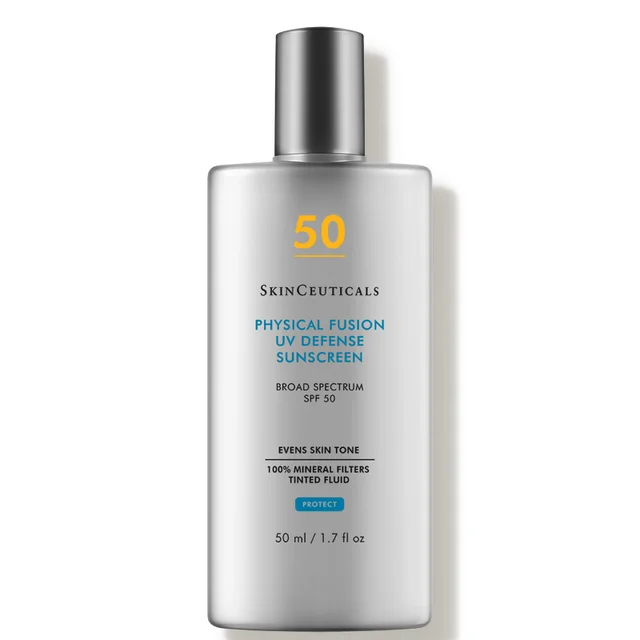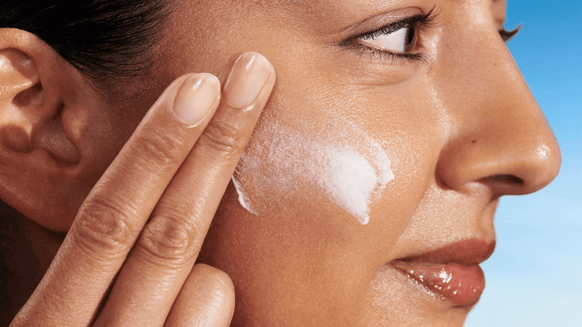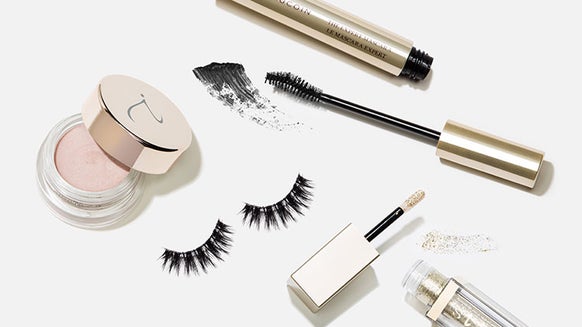What to Expect During a Skin Exam (Plus How to Give Yourself a Skin Check at Home)
So you've scheduled your annual check-ins with your doctor, consider adding "skin check" to your to-do list, too! Seeing a dermatologist at least once a year is an important step to maintaining healthy skin.
As dermatologist Dr. Sharyn A. Laughlin, MD explains, “There is no magic age at which you should start getting skin checks. It depends on your skin type, your sun exposure profile, whether you have a history of frequent sunburns, and your family history. Though certain studies show that going through routine skin exams isn’t a 100 percent guarantee that you won’t get skin cancer, having a go-to dermatologist who understands your specific issues is never a bad idea.”
If you haven’t had your body examined from head-to-toe for any suspicious moles, lesions or spots before, now is the right time to do so. Here’s everything you need to know about skin cancer screenings, how to give yourself a skin check and a few other tips on how to keep the largest organ in your body---your skin---safe.
But First, What Is Skin Cancer?
Of the thousands of types of cancer diagnoses someone can receive, the most common one is skin cancer. It’s estimated that between 40 and 50 percent of Americans who live to age 65 will have either basal cell carcinoma or squamous cell carcinoma at least once, according to SkinCancer.org. In simple terms, skin cancer is the uncontrolled growth of abnormal cells and it happens when unrepaired DNA damage to skin cells triggers mutations. Though you can experience skin cancer anywhere on your body, the areas that receive the most exposure to sunlight---like your scalp, face, shoulders and chest---are more at risk than say, your underarms.
What Are the Types of Skin Cancer?
There are dozens of types of skin cancer, all with varying degrees of severity and frequency, but the most common forms are basal cell carcinoma, squamous cell carcinoma and melanoma. Here, Dr. Bobby Awadalla M.D., a dermatologist and Mohs Skin Cancer Surgeon in Laguna Beach, CA, explains the difference:
1. Basal Cell Carcinoma
There are more than four million cases of basal cell carcinomas (BCC) each year in the United States, making it the most common type of skin cancer. BCC arises from your epidermis, which is the outer layer of your skin and are typically slow-growing. Though often easier to treat than other forms, Dr. Awadalla says, “If left for an extended period of time, they can have catastrophic consequences, especially on the face.” When you’re on the lookout for possible BCC spots, Dr. Awadalla says to look for a pearly appearance and take special note if the area starts to bleed. If a freckle, mole or spot changes over a few months, see your dermatologist right away.
2. Squamous Cell Carcinoma
This type of cancer also arises from the outer layer of skin, but is more aggressive than BCC. Dr. Awadalla says that instead of a pearly appearance, SCC often has a scaly, elevated and red look you can feel when you brush against the area with your hand. If you notice a brown freckle changing to this type of texture and color, make sure to alert your dermatologist and take notes of the transformation over time.
3. Melanoma
As the most severe of type of cancer, melanoma demands your attention ASAP, if you see any spot that could be prone to this diagnosis. For melanoma, dermatologists recommend following the ABCDE guide for checking a mole, with each letter representing a different quality to investigate.
What to Expect During a Skin Cancer Screening
In addition to being aware of suspicious areas that could be dangerous, building a relationship with your dermatologist and getting regular screen checks will help keep your skin safe and protected. Like with any other physical, your dermatologist will be super thorough as they exam your body, from head to toe. Dr. Awadalla explains, “When someone goes for a skin cancer screening, they will be asked to remove their clothing, leaving their bra and underwear on, and get into a gown. The dermatologist will enter the room and assess the overall risk that the patient has for skin cancers. The examination will proceed with very close inspection of all parts of the body including the scalp, mouth and between the toes.”
During this check, your dermatologist might notice something unusual. Though you might worry, Dr. Awadalla says that being overly cautious is better than skipping out on a wary spot. If they send out a freckle or mole to be biopsied, you’ll likely know if it’s benign or something serious within one to two weeks. From there, you can discuss next steps for treatment.
How to Give Yourself a Skin Check at Home
Since you probably only see your dermatologist once or twice a year, Dr. Laughlin says giving yourself at-home skin checks will help you keep a pulse on your various bumps and spots. “I recommend everyone---even darker skin types who are at lower risk for skin cancer---to know their own skin. Review it at least every three months, in front of a long mirror and use a hand mirror where required,” Dr. Laughlin says. “Especially if you have a concern for any new mole or lesion (some may be pink or brown) you should watch to see if it persists for more than three months or continues to change with time.”
Dr. Awadalla adds that keeping track of any changes with photos will give your dermatologist a better idea of how a specific area is boding. Even if you don’t show these shots to your dermatologist, they can help you see a transformation that’s so subtle, you might miss it without the documentation. He says that images should be taken about a foot away from the skin and if possible, taken by someone else for the best angle. “Doing this creates a baseline of all the spots on your body, especially the moles, that you can refer to when doing skin exams,” he explains.
How to Protect Yourself From Skin Cancer
Better than any skin check? Doing your best to prevent possible cancerous developments by protecting your skin, every single day. Though there’s never a guarantee you won’t one day get skin cancer, following these reminders will give you the best chance:
1. Stay Out of the Sun at Peak Times
Those days of turning over every 30 minutes to make sure your tan is even? Welp, they’re over, and maybe shouldn’t have happened in the first place. Though a glow is nice to have, Dr. Awadalla says avoiding the sun during its hottest hours---between 10 a.m. and 2 p.m.---is recommended to avoid damage.
2. Use Sunscreen With at Least an SPF of 30
Toss out that SPF 15 ASAP and opt for a more effective barrier between you and those rays. “I like to tell people to use the highest SPF they can tolerate because although there is little gain in protection between an SPF 30 and SPF 50 or 100, the reality is that people don’t apply nearly enough sunscreen, nor do they reapply as often as they should so this is something people should pay careful attention. The recommended amount of sunscreen to use is 1 oz.---the size of a shot---every two hours to cover their body,” Dr. Awadalla suggests.
3. Use Protective Eyewear and Clothing
For an additional shield against the sun, Dr. Awadalla recommends buying UV-protective sunglasses to keep your eyes safe (yep, you can get skin cancer in your eyes!) and investing in sun-protective clothing with UPF, including shirts, hats and more.

From the latest hair and makeup trends to the best solutions for your skin issues, we've got all your beauty concerns covered!








